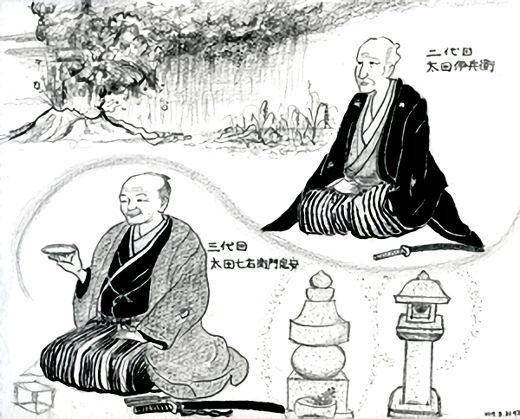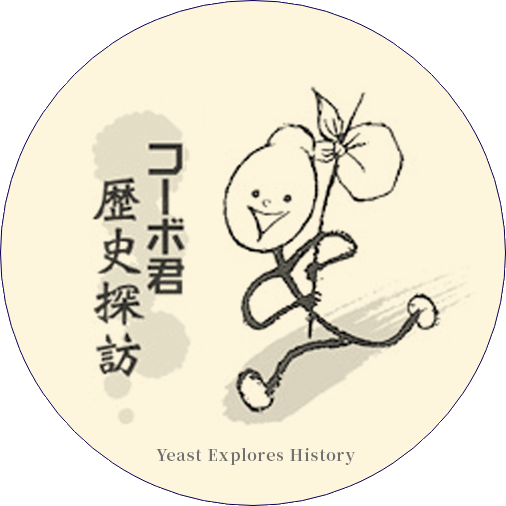| Yeast |
“Old Well, what happened after Saburouemon established Daishichi?” |
|
 |
| Old Well |
“When Saburouemon became independent, he had a five year old son. That is Ihee, the 2nd Generation. Ihee saw the hard work of his father from close-by when he grew up. When Saburouemon died, he became family head at the age of 29. Ihee had several names. First the common name Ihee, next the sobriquet Sogi, and on his gravestone the name Tomiaki Sannojo has been inscribed.” |
| Yeast |
“That last name sounds like a samurai.” |
| Old Well |
“It may go back to the Tamaru samurai family with which he was related by marriage. But more details are not known. Ihee lived longest among all pre-modern Ohta family heads. Many things happened during his long life, and he also had bitter experiences. On April 8, 1783, when Ihee was 36 years of age, the devastating eruption of Mt Asama, known as the Tenmei Eruption, happened. The eruption became increasingly violent and continued for four months. In July an incredibly climactic eruption took place. Volcanic smoke thickly covered the sky, and ashes rained down in many areas. This caused a severe famine from Shinshu (Nagano prefecture) to Northeastern Japan. As there was a rice shortage, strict limits were imposed on sake brewing. It was a hard trial for Ihee. His wife also died at that time.” |
| Yeast |
“It must have been really awful.” |
| Old Well |
“But not everything was negative, Yeast. In 1793, in Takeda an irrigation channel was completed. This area is on three sides enclosed by hills, and therefore it is difficult to bring water here for irrigation. But it was realized thanks to the calculations of Bunzo Isomura, who was born in Nihonmatsu, and who in his time was the best mathematician of Japan. It also took a load off the backs of us, wells. In the Bunka period (1804-1818) every year saw good rice harvests. The trials were over. There was plenty of rice and sake brewing was encouraged. In 1806 a decree was issued that no license was needed anymore for sake brewing, which led to a bubble economy for sake breweries. A lot of cheap rice was available, and because brewing sake was possible without any license, many newcomers appeared. Ihee could spend the second half of his life in prosperity. When we look at his portrait, it was a master with a refined and gentle expression. He experienced the loss of wife and child, but he liked elegant arts and led a happy life with his second wife who was known as an example of virtue. When the long, prosperous Bunka period had started, the 3rd generation Shichiuemon Sadayasu Ohta entered the family business.” |
| Yeast |
“The young master!” |
| Old Well |
“Yes, you could call him that. We have an excellent portrait of him by a skillful painter, on which he looks like a friendly and elegant person. In contrast to the strict expression of the founder, he gives the impression of having a relaxed and playful mind. The name Shichiuemon he took seems to have come from the Tamaru family, and was assumed by the heads of all following generations. In his old age, in the Tenpo period (1830-1844), he had some worries as restrictions on sake brewing were again introduced. At the end of his life, the four Ohta families commemorated the 200th anniversary of the passing of the shared founder of the Ohta clan in Nihonmatsu, Shigekata Juzo Ohta, and set up a stone gorinto pagoda and votive lantern for him. The monument is a reminder of the good times when the whole Ohta family prospered.” |





